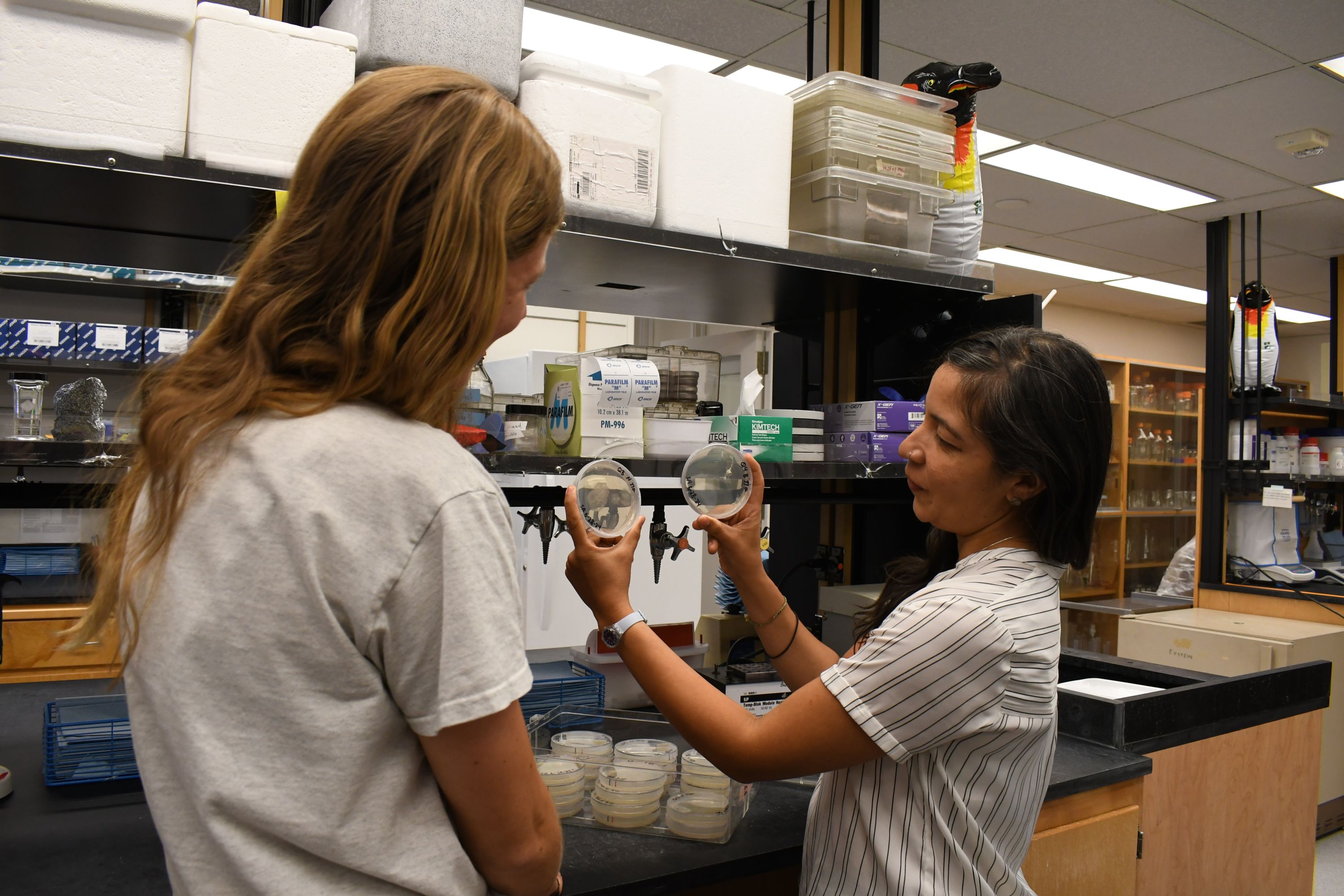Encountering Resistance to Fungicides in California's Vegetable Transplant Industry

By Emma K. Tribble
Western IPM Center
If the fungal pathogen Botrytis cinerea had a job interview, it would tout itself as adaptable and resilient. Adaptable, because its related disease, Botrytis blight, affects multiple vegetable transplants, including tomatoes, broccoli and cabbage. Resilient, because its short life cycle and genetic diversity allow it to develop resistance to fungicides faster than other fungi.
Those traits have made Botrytis blight one of the most common diseases in California nurseries. Nursery growers producing vegetable transplants can’t sell visibly infected plants to the farms that rely on transplants to start their crops, and worry that losing effective control methods would greatly increase their losses and reduce the availability of transplants for hundreds of vegetable growers in the state.
“We know from other industries, like grapes, strawberries and kiwi production here in California, that there has been reported fungicide resistance in Botrytis associated with these crops,” said plant pathologist Dr. Johanna Del Castillo, an assistant professor of Cooperative Extension at the University of California, Davis. “The question that we have is, ‘Is that the case in vegetable transplant production?’”
Preliminary tests done in her lab by post-doctoral researcher Ruchika Kashyap showed that Botrytis cinerea populations collected from vegetable transplant nurseries were potentially resistant to azoxystrobin, a commonly used fungicide in the nursery industry.
With a grant from the Western Integrated Pest Management Center, Del Castillo will pit Botrytis cinerea against at least five more fungicides used in the California vegetable transplant industry. So far, she has collected Botrytis samples from nurseries in the Central Valley and the Central Coast. She will also examine the genetic variability of the collected samples to pinpoint what genetic mutations can cause resistance.
If Botrytis cinerea is resistant to certain fungicides, Del Castillo will inform the nursery growers so they can avoid unnecessary fungicide applications by only using effective products. Changes in nursery management practices, something that Del Castillo has researched, can lower disease pressure so that fungicides are less critical. Another option is alternative products, which the global flower nursery industry is already exploring.
“A lot of their Botrytis isolates are resistant to a wide range of fungicides, so they started evaluating other products, like food-preserving products, for their efficacy on Botrytis,” Del Castillo said, “I’m interested in seeing if these products can be used here with vegetable transplants in case resistance does develop.”
Ultimately, to stay ahead of the disease, growers and researchers will need to be adaptable and resilient, like Botrytis cinerea itself.